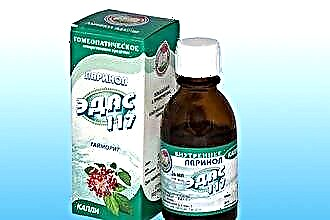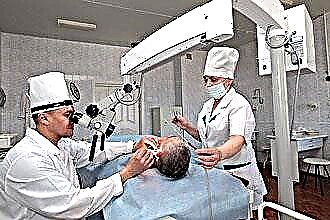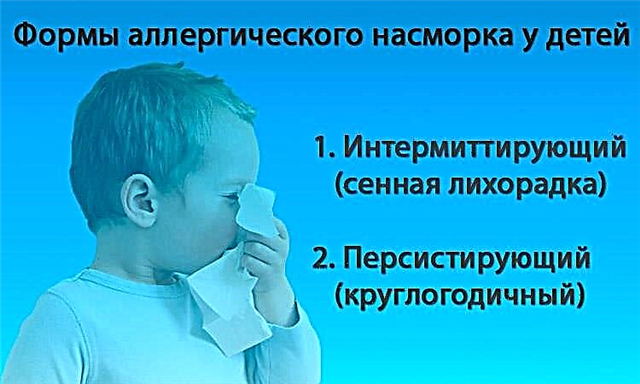 Non-surgical methods of treatment can restore the normal size of the pharyngeal tonsil, but only in the absence of serious complications.
Non-surgical methods of treatment can restore the normal size of the pharyngeal tonsil, but only in the absence of serious complications.
If the lymphoid tissues that make up the immune organ are more than 40% obstructed in the nasal passages, surgery is likely to be required.
At the initial stages of the development of the disease, hypertrophy (enlargement) of the tonsils can be stopped with the help of drugs and physiotherapy (ultrasound, laser, magnetic therapy).
Why is surgery so bad?
Conservative treatment of adenoids in children makes it possible to minimize the likelihood of re-proliferation of the pharyngeal tonsil as much as possible, since it is aimed at eliminating the cause of the development of the disease. Surgical intervention is one of the symptomatic methods of therapy that eliminate the symptoms, but do not prevent the re-growth of glandular tissue in the fornix of the nasopharynx.
Why is surgery considered an outdated and ineffective method of treating adenoids in children?
- the tissue of the nasopharyngeal tonsil is almost impossible to remove completely, therefore, repeated growth of the organ is not excluded;
- surgical intervention removes the effect, not the cause of the disease;
- removal of the amygdala, which is an immune organ, leads to a decrease in immunity;
- the operation harms the child's psyche and increases the risk of complications such as scarring of the Eustachian tube, paralysis of the soft palate, stenosis of the throat, etc.;
- not always excision of the adenoids eliminates snoring, as it can be the result of chronic rhinitis, abnormal structure of the nasal septum, or allergic reactions.
Adenotomy (surgical removal of the adenoids) does not guarantee 100% cure for ENT disease.
In addition, surgical treatment is highly undesirable in children under the age of 5 years, since this can lead to mental disorders and the development of numerous phobias. In about 2 out of 10 cases, the child begins to stutter and feel fear even before routine checkups with pediatricians.
When to start treatment?
Is it possible to painlessly and quickly cure adenoids in children? Surgery can only be avoided if the disease is diagnosed and treated in a timely manner. That is, the sooner parents recognize the symptoms of adenoids and consult a doctor, the higher the effectiveness of conservative treatment will be.
It is possible to suspect the development of an ENT disease in a child by the following characteristic signs:
- Difficulty nasal breathing;
- persistent nasal congestion;
- lingering runny nose;
- lethargy and drowsiness;
- frequent colds;
- change in voice (nasal);
- holding your breath during sleep.
The enlarged amygdala blocks the opening of the auditory tubes and nasal passages, which subsequently leads to stagnation of mucus in the airways and difficulty breathing.
Treatment methods
How to cure adenoids in a child without surgery? In the absence of formidable complications, the treatment of the disease is carried out with the help of medicines and physiotherapy procedures. The tactics of therapy largely depends on the symptoms and the degree of enlargement of the nasopharyngeal tonsil. If soft tissues only 25-30% block the nasal passages, you can limit yourself to taking anti-inflammatory, tonic and antiseptic drugs.
Non-surgical treatment includes many different methods, the use of which gives positive therapeutic results. As for the treatment of adenoids with medicines, the following means are usually included in the therapy regimen:
- immunostimulating;
- fortifying;
- antiallergic;
- vasoconstrictor;
- disinfecting;
- expectorant.
The attending physician can prescribe the child a course of physiotherapeutic treatment, thanks to which the normal patency of the nasal passages and, accordingly, the outflow of mucus from the paranasal sinuses and nasopharynx will be restored.
Nasal preparations
 Instilling vasoconstrictor drops into the nose allows you to normalize the patency of the nasal canals and prevent breath holding (apnea) during sleep. For the treatment of young children, it is recommended to use medicines that contain essential oils and emollients. They prevent drying out and irritation of the mucous membranes, which causes uncomfortable sensations - burning, sore throat, tingling, etc.
Instilling vasoconstrictor drops into the nose allows you to normalize the patency of the nasal canals and prevent breath holding (apnea) during sleep. For the treatment of young children, it is recommended to use medicines that contain essential oils and emollients. They prevent drying out and irritation of the mucous membranes, which causes uncomfortable sensations - burning, sore throat, tingling, etc.
Vasoconstrictor nasal drops are symptomatic therapy drugs that only alleviate the child's condition, but do not eliminate the cause of the appearance of adenoids.
The following pharmaceutical preparations may be included in the scheme of complex treatment of ENT diseases:
- Olint;
- "Tizine";
- Sanorin;
- Pharmazolin;
- "Nazol Baby".
Many vasoconstrictors lead to dehydration of the mucous membranes, therefore, after their use, it is recommended to instill 2-3 drops of thuja or tea tree oil into the nasal passages.
Rinsing the nose
How are adenoids treated in children? Nasal lavage is one of the main recommendations of an otolaryngologist, which should be taken into account when treating adenoids. With its help, you can not only cleanse the nasal passages of mucus, but also prevent the multiplication of pathogenic viruses and microbes in the ENT organs. In other words, sanitation of the nasopharynx allows you to increase immunity and prevent inflammation of the nasopharyngeal tonsil.
It should be noted that washing is possible only if the child is at least 3-4 years old. When rinsing the nose in children under 3 years of age, it is possible that medicinal solutions enter the respiratory tract, which can provoke bouts of severe coughing. According to the indications, the specialist prescribes drugs with antiallergic, antimicrobial and drying effect.
As a rule, children are treated with:
| Drug name | Drug type | Operating principle |
|---|---|---|
| Miramistin | antiseptic | inhibits the reproduction of opportunistic microorganisms, which prevents inflammation of the nasopharynx |
| "Avamis" | corticosteroid | eliminates inflammation, thereby increasing the patency of the nasal passages |
| "Protargol" | antiseptic | disinfects the nasopharynx and prevents the development of purulent-inflammatory processes |
| Dolphin | isotonic saline | accelerates the evacuation of viscous secretions from the nasal cavity, creates an unfavorable environment for the growth of bacteria |
| "Physiomer" | isotonic solution | eliminates the manifestation of respiratory diseases by facilitating breathing and increasing the lumen in the nasal passages |
Most solutions bring only temporary relief of the symptoms of the disease, therefore they are used only as an adjunct to the complex treatment of adenoids.
For rinsing the nose, it is recommended to use decoctions from coltsfoot, eucalyptus, celandine, chamomile, St. John's wort and calendula. They have pronounced anti-inflammatory and anti-edema properties.Regular sanitation procedures can reduce the size of the amygdala and thereby eliminate the main manifestations of the disease.
Homeopathic remedies
Taking homeopathic medicines helps to improve metabolic processes and increase the immunity of the child's body. Studies show that it is the frequent relapses of inflammatory processes in the respiratory organs that provoke the proliferation of the nasopharyngeal tonsil. Elimination of the main cause of its appearance not only accelerates the healing process, but also prevents repeated hypertrophy (increase) of the immune organ.
When treating adenoid vegetations in young children, homeopathic medicines such as:
 "Euphorbium compositum" - eliminates the signs of allergies and accelerates the regeneration (restoration) of the mucous membranes;
"Euphorbium compositum" - eliminates the signs of allergies and accelerates the regeneration (restoration) of the mucous membranes;- "Job-Kid" - prevents the development of inflammation and eliminates the manifestations of a sluggish rhinitis;
- "Edas" - relieves swelling and inflammation in the nasopharynx, eliminates the manifestations of diseases of allergic etiology;
- "Silicea" - normalizes cellular metabolism, as a result of which the process of resorption of hyperplastic (overgrown) tissues is accelerated;
- "Rhiniltiks complexon" - eliminates inflammation, as a result of which the patency of the choanas (nasal passages) improves.
Many doctors are skeptical about the treatment of ENT diseases with homeopathic remedies. However, with the correct selection of monopreparations and the preparation of an adequate therapy regimen, it is possible to prevent a further increase in the size of the nasopharyngeal tonsil. Medicines based on medicinal herbs restore the activity of the ciliated epithelium, which prevents stagnation of mucus in the nasopharynx.
Are antibiotics needed?
Antimicrobial drugs are prescribed only when infectious and allergic reactions appear in the upper respiratory tract - throat, nasal cavity, Eustachian tubes, paranasal sinuses, etc. Viral and bacterial inflammation of the pharyngeal tonsil is called adenoiditis. It is recommended to use antibiotics to eliminate inflammation and symptoms of an infectious disease.
For the treatment of young children, only those drugs are used that have the least toxic effect on the body.
It is possible to destroy the pathogenic bacteria that cause purulent inflammation of the nasopharynx with the help of antibiotics such as:
- "Amoxiclav";
- Clarithromycin;
- "Ampicillin";
- Zinnat;
- "Doxycycline".
Antibiotic therapy should not be interrupted without a doctor's recommendation, as this can lead to relapses of purulent inflammation.
When undergoing antimicrobial therapy, it is very important to maintain a normal microflora in the intestine. The development of dysbiosis entails a decrease in general immunity, which can lead to the appearance of respiratory diseases. To populate the digestive tract with beneficial bacteria, probiotics such as Acidophilus or Hilak Forte can be used.
Physiotherapy
Non-surgical treatment of adenoids involves the use of physiotherapeutic procedures that normalize redox reactions in tissues and thereby accelerate the healing process. Despite the fact that physiotherapy has a beneficial effect on the course of the disease, it must be combined with drug therapy.
Hardware methods of treatment only stimulate the regeneration of mucous membranes and enhance the therapeutic effect of drugs. What physiotherapy procedures will be most effective in the treatment of adenoids? The most effective methods of treating pathology in children include:
- UV-therapy - has a desensitizing (antiallergic) effect on the body, thereby eliminating the swelling of the mucous membranes, nasal congestion, lacrimation and allergic rhinitis; ultraviolet rays disinfect the nasopharynx, as a result of which the processes of restoring the integrity of tissues are accelerated;
- electrophoresis - provides deep penetration of anti-inflammatory and antibacterial drugs into the affected tissues, which contributes to the early elimination of the symptoms of the disease;
- magnetotherapy - increases the biological activity of immune cells, which include leukocytes, neutrophils, macrophages, as a result of which the process of destroying pathogenic viruses and microbes in the nasopharyngeal tonsil is accelerated.
To achieve obvious results, physiotherapy procedures are carried out in courses of 10-15 sessions. Hardware therapy increases the body's immune forces and restores the functional activity of the nasopharyngeal tonsil. According to observations, when undergoing physiotherapy at the initial stages of the development of the disease, it is possible to restore the normal size of the organ in 8 out of 10 cases.

 "Euphorbium compositum" - eliminates the signs of allergies and accelerates the regeneration (restoration) of the mucous membranes;
"Euphorbium compositum" - eliminates the signs of allergies and accelerates the regeneration (restoration) of the mucous membranes;

